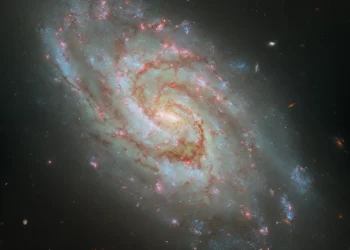Over the past 2.5 years, space has welcomed the arrival of two modern telescopes: NASA’s James Webb Space Telescope and the ESA’s Euclid Observatory. And they’re not alone. Before this decade concludes, they will be in the elite company of NASA’s Nancy Grace Roman Space Telescope, the SPHEREx, and ESA’s PLATO and ARIEL telescopes.
The pivotal mission of these observatories? Harnessing the power of state-of-the-art optics to hunt down and characterize exoplanets. Their collective hope? Finding worlds that might support life.
Drowning in Data: The Need for Machine Learning
With older missions still churning out data, these telescopes will produce enormous datasets. Interpreting these will necessitate the assistance of sophisticated machine learning tools to unearth potential signs of life, referred to as biosignatures.
Recently, scientists from the University of Florida’s Institute for Fundamental Theory proposed an intriguing approach. They believe using machine learning to detect anomalies in spectral data could uncover previously unimagined chemical signatures hinting at life.
The Changing Landscape of Exoplanet Research
Our understanding of exoplanets has grown leaps and bounds in recent decades. It was only in 1992 that we first confirmed the existence of exoplanets. But the launch of the Kepler Space Telescope in 2009 accelerated the discovery rate. As of now, we’ve confirmed 5,496 exoplanets, with many more candidates under review. These numbers signify a shift from simply finding exoplanets to deeply understanding them.
As Prof. Matcheva pointed out, our tools for examining these distant worlds are becoming increasingly refined, promising comprehensive analyses for years to come.
Honing the Search for Alien Life
The hunt for extraterrestrial life has largely focused on what we, on Earth, understand as life. For instance, we know certain gases like oxygen, nitrogen, and methane are linked to life here. Consequently, these have been our primary targets in exoplanetary atmospheres.
However, Matcheva and her team argue for a more expansive approach. Using machine learning, they believe we can identify anomalies, or unexpected data points, in the vast sea of information we gather. Their research demonstrated that machine learning methods, such as LOF and OCSVM, could successfully identify anomalies even amidst noisy data.
A Fresh Perspective on Life
The long-standing debate in astrobiology revolves around defining ‘life.’ The idea of searching for life “as we know it” might be too restrictive. As Matcheva aptly expressed, our understanding is influenced by Earthly experiences, but we might be overlooking life forms that don’t fit our mold.
Thus, machine learning offers a compelling solution, helping us detect those out-of-place data points that could be evidence of life “as we don’t know it.”
PLEASE READ: Have something to add? Visit Curiosmos on Facebook. Join the discussion in our mobile Telegram group. Also, follow us on Google News. Interesting in history, mysteries, and more? Visit Ancient Library’s Telegram group and become part of an exclusive group.











